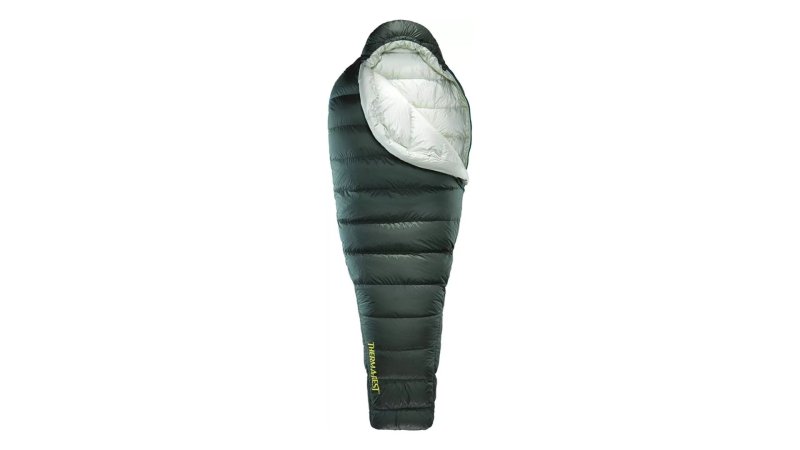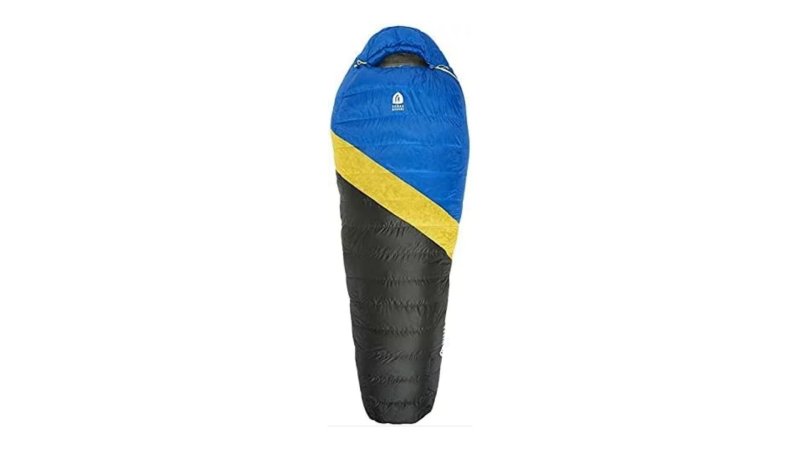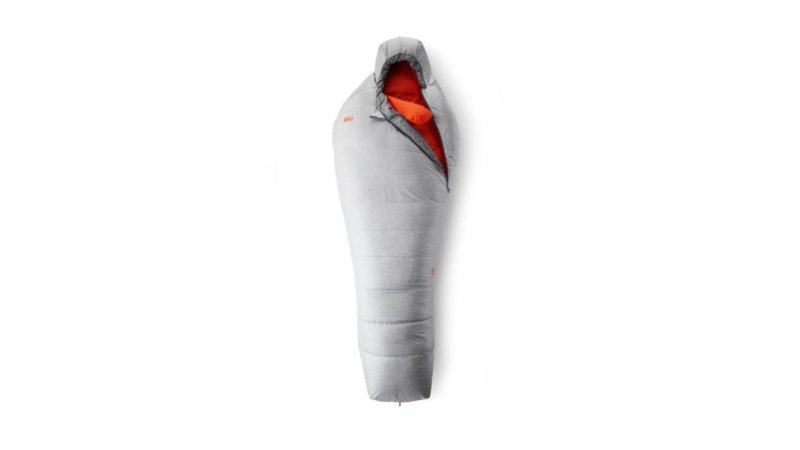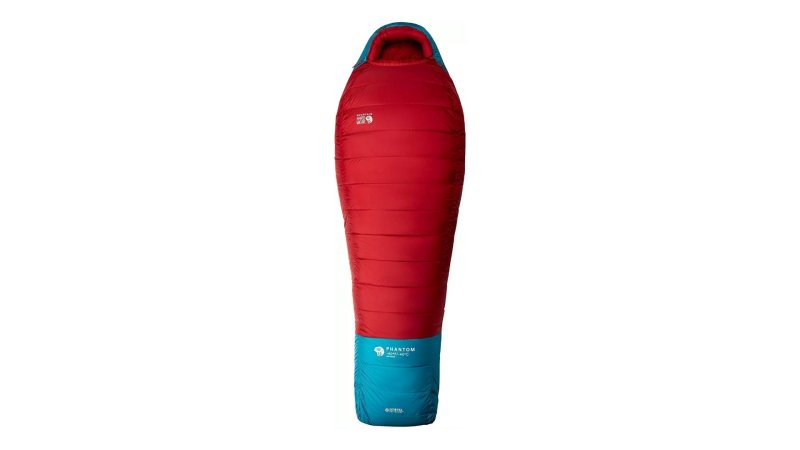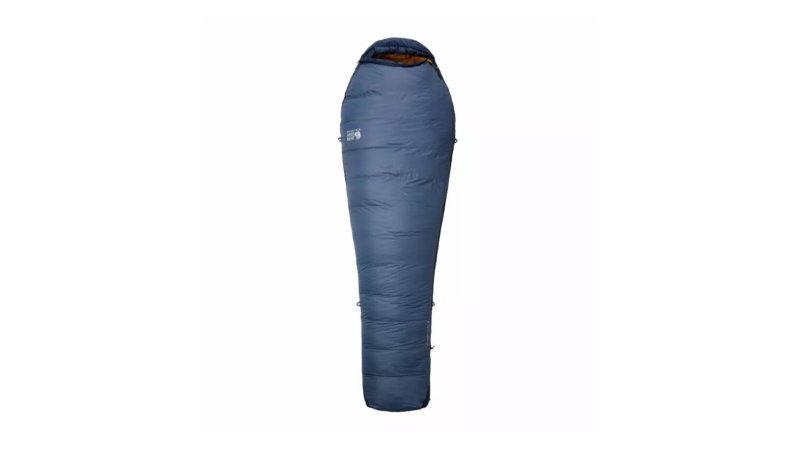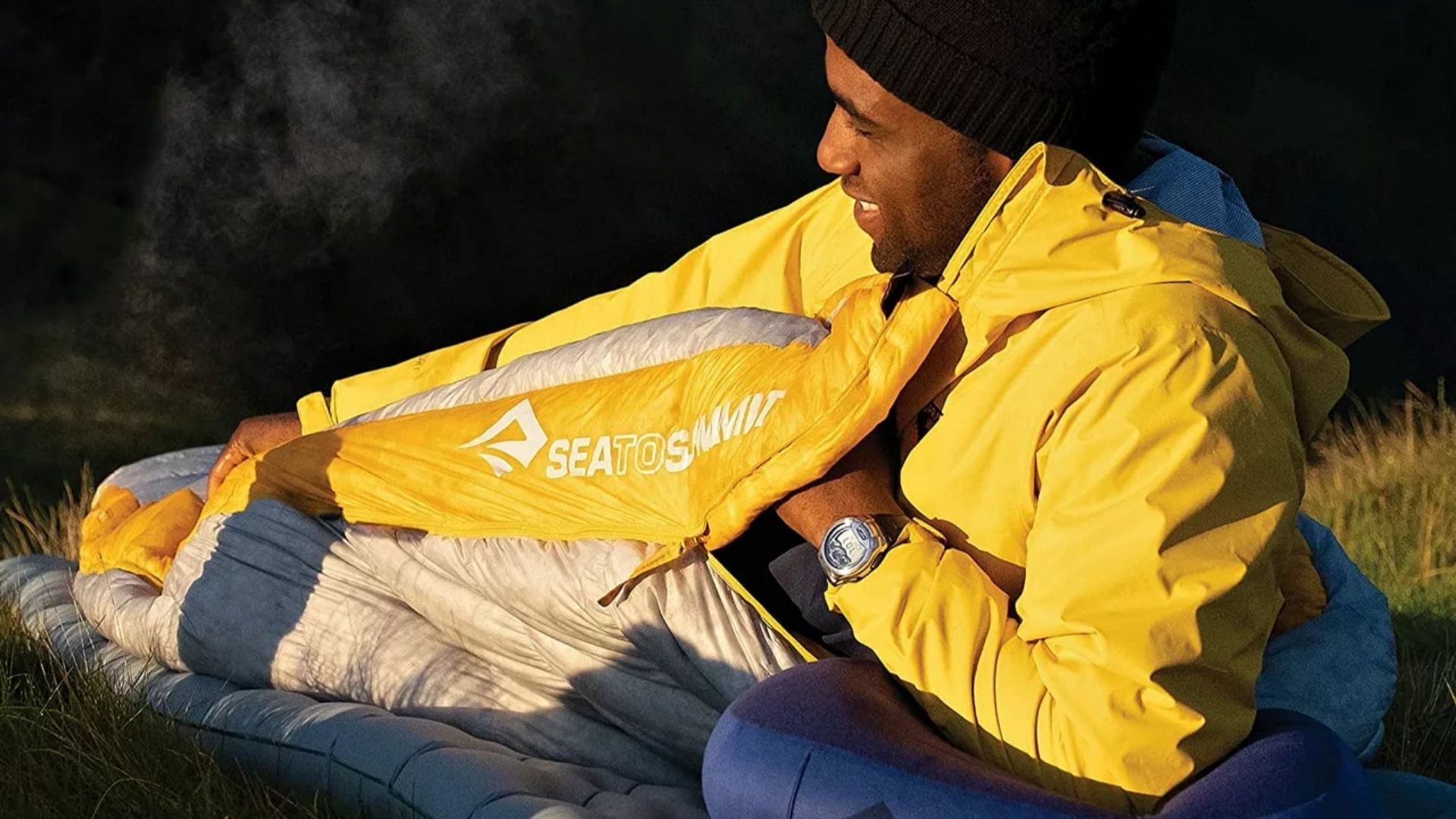

We may earn revenue from the products available on this page and participate in affiliate programs.
If you’re like me and hate a heavy backpack, then you probably already know that the heaviest three items are typically the backpack itself, your shelter, and your sleep system, so we’re going to focus today’s review on shaving ounces and finding the best ultralight sleeping bag for you.
Ultralight (UL) backpacking is more of a state of mind than a specific definition. It’s about taking a serious look at how much every item of your gear weighs and making decisions about whether to take it or replace it with a lighter option. It also involves understanding what you’re sacrificing in terms of trade-offs. In order to go fast and light, hard decisions have to be made and frequently you’re giving up a bit of comfort, versatility, and/or durability over heavier similar items.
Any idiot can make a heavy sleeping bag. Sure, it will be warm, but it will also be bulky and weigh a lot. It takes real talent to make sleeping bags light, warm, and compressible or packable. Typically, this is done by making the sleeping bag more form-fitting to the body (less interior volume equals less material equals less weight), using stronger, lighter, and more often less durable materials (10 denier fabrics or lighter), shortening zipper lengths (full to half or one-third), omitting add-ons like interior pockets, and using the very highest quality down (800 power fill or higher).
So strap in and let’s find the best ultralight sleeping bag for you!
- Best Overall: Therm-A-Rest Hyperion 32UL
- Best Value: Sierra Designs Nitro UL 800 35
- Editor’s Choice: REI Co-op Magma 30
- Honorable Mention: Mountain Hardwear Phantom
- Best for Side Sleepers: Sea to Summit Spark 28
- Best Budget: Mountain Hardwear Bishop Pass 30
Best Overall
Therm-A-Rest Hyperion 32F/0C Sleeping Bag
Pros
- Incredibly lightweight
- The very highest fill power hydrophobic down
- Very compressible, packable
- Thermally efficient baffled box construction
- Integrated sleeping pad hugging straps
Cons
- Expensive
- Warmth rating is a bit hyped
Product Specs
- Weight: 16 ounces / 460 grams
- Fill: 900 down
- Fill weight: 8.5 ounces / 250 grams
- Warmth
- Comfort: 41F
- Limit: 32F
- Extreme: 5F
- Packed dimensions: 5.5 x 6 inches
- Materials: 10D nylon ripstop shell with DWR finish
Best Value
Sierra Designs Nitro 35
Pros
- High-quality 800 fill power hydrophobic down
- Draft collar to seal in heat
- Sidewall baffles prevent down shifting
- Innovative self-sealing foot vent
- Anti-snag zipper
Cons
- Stuff sack lacks compression straps
- Half-length zipper
Product Specs
- Weight: 22 ounces / 623 grams
- Fill: 800 down
- Fill weight: 9 ounces / 255 grams
- Warmth
- Comfort: 37F
- Limit: 27F
- Extreme: NA
- Packed dimensions: 13 x 7 inches (without compression sack)
- Materials: 15D nylon ripstop shell, 15D liner
Editor’s Choice
REI Co-op Magma 30
Pros
- Exceptional warmth-to-weight ratio
- Very light
- Packs small
- Generous neck baffle
- Comfortable fit
- Full-length zipper
Cons
- Ok warmth, really a 40-degree bag
- Stuff sack lacks compression straps
- No stash pocket
Product Specs
- Weight: 19.8 ounces / 561 grams
- Fill: 850+ down
- Fill weight: 9.7 ounces / 274 grams
- Warmth
- Comfort: 39F
- Limit: 30F
- Extreme: NA
- Packed dimensions: 2.6 liters
- Materials: 15D Pertex
Honorable Mention
Mountain Hardwear Phantom
Pros
- Extremely lightweight
- Very high fill power down
- Very compressible, packable
- Snag proof zipper
Cons
- Expensive
- Tight cut
Product Specs
- Weight: 22.3 ounces / 632 grams
- Fill: 850 down
- Fill weight: 10 ounces / 285 grams
- Warmth
- Comfort: 35F
- Limit: 25F
- Extreme: -5F
- Packed dimensions: 4.1 liters
- Materials: 10D recycled nylon ripstop shell
Best for Side Sleepers
Sea to Summit Spark 28
Pros
- Very high warmth-to-weight ratio
- Super light
- Double zone full box baffle design
- Packs down ridiculously small
- Innovative vertical baffles on torso better for side sleepers
Cons
- Less versatile half-length zipper
- Sewn-through baffles
- Smallish draft tube
- Expensive
Product Specs
- Weight: 17.3 ounces / 490 grams
- Fill: 850+ down
- Fill weight: 10.6 ounces / 300 grams
- Warmth
- Comfort: 35F
- Limit: 28F
- Extreme: NA
- Packed dimensions: 2.5 liters
- Materials: 10D recycled nylon ripstop shell, 7D liner
Best Budget
Mountain Hardwear Bishop Pass 30
Pros
- Affordable
- Warm as rated
- Packable, especially with compression stuff sack
- Versatile ¾-length snag-proof zipper
- Comfortable
Cons
- Lacks neck baffle
- Stuff sack lacks compression straps
Product Specs
- Weight: 28.6 ounces / 810 grams
- Fill: 650 down
- Fill weight: 10.6 ounces / 300 grams
- Warmth
- Comfort: 40F
- Limit: 30F
- Extreme: -1F
- Packed dimensions: 2.5 liters
- Materials: 20D nylon ripstop
Things to consider before buying an ultra-lightweight sleeping bag
Going fast and light in the backcountry means less strain and fatigue on your body and, typically, a more enjoyable time. Because ultra-lightweight sleeping bags tend to be expensive as hell, it’s important to really know what you need before you buy, and inevitably, you’ll be trading off some aspects of comfort, warmth, versatility, or a combination of all three to get a sleeping bag that weighs half as much as a normal backpacking sleeping bag. Ultra-lightweight bags shave ounces by using the highest-quality materials and the lightest and fluffiest down. Here are a few other things to think about.
Safety
I consider my sleeping bag and shelter to be more than just comfort items. They are essential parts of my survival system in the backcountry. Please make sure you know how to properly use ultra-lightweight gear before you err on the side of caution. Don’t let your urge to shave ounces put you in a situation where you might become hypothermic. Take the right gear for anticipated weather conditions, and also leave yourself a little bit of margin to boot.
Cut
Ultra-lightweight sleeping bags are most commonly designed in a form-fitting mummy bag shape. They are much more narrow at the foot, hips, and shoulders than regular sleeping bags to save weight on materials. They also typically have a hood with a neck or collar baffle that can be cinched tight around the nose and mouth to provide maximum warmth retention. Some UL bags don’t have a hood, so check before you decide. The advantage of a hood is that you’ll stay warmer. Bring a warm hat along if you decide to go hoodless, as most of the heat lost from your body in cold weather is through your head. (I don’t recommend hoodless bags.) The form-fitted cut of mummy bags may feel a bit more claustrophobic, but they also help keep you warm because there is less air for your body to heat on the interior of the bag.
Temperature rating
It’s critically important to understand sleeping bag warmth ratings. Frequently, manufacturers will market a bag at a lower temperature than its comfort rating. The good news is that every quality sleeping bag will have the comfort, lower limit, and extreme ratings printed on it somewhere — usually on the interior along the zipper. The comfort rating states the outside temperature at which a cold sleeper might still feel comfortable. The lower limit rating is the temperature at which a warm sleeper might still feel comfortable. The extreme rating is the lowest temperature a person could remain in the bag for six hours without risk of death from hypothermia.
Down insulation
Almost every UL sleeping bag is insulated with a high power fill goose down because it has the best warmth-to-weight ratio — far more than any synthetic fiber. The higher the number, the more lofty the down — and the higher the number, the better the down. For instance, a sleeping bag filled with 10 ounces of 800 fill down will provide the same warmth as a heavier, less packable bag filled with 20 ounces of 400 fill down. But, you gotta keep that down dry. When it gets wet, it clumps and loses its loft. No loft means no trapped warm air, which means a shivering you. So keep your down bag dry! To combat this, manufacturers have recently started using hydrophobic DWR finished down. The jury is out on how much hydrophobic down really helps.
Packability
This is a measure of how small you can compress your sleeping bag. The smaller you can make it, the less room it takes in your pack, and the more you can get away with a smaller and lighter backpack. If your sleeping bag’s stuff sack doesn’t have compression straps on it, toss it and invest in a waterproof one that does. You’ll easily be able to reduce the size of the packed bag by half again with a compression sack.
FAQs about ultralight sleeping bags
Q: How much should an ultralight sleeping bag weigh?
A: I consider any bag under 25 ounces to be an ultra-lightweight sleeping bag.
Q: Is four pounds heavy for a sleeping bag?
A: Yes. Four pounds is a lot for a sleeping bag. If you’re car camping or just hiking a short distance, it might not matter much. Typically, bags weighing four pounds or more are roomier and more comfortable. If you’re going to be hiking long distances over multiple days, you’ll want the lightest bag you can afford. This is why I included the Mountain Hardwear Bishop Pass 30 as an option. At 28 ounces, it’s a lightweight bag, but not a UL bag, but it compresses about as small as a UL bag and costs hundreds less.
Q: Should I get a 15- or 30-degree ultralight sleeping bag?
A: It depends on how cold it will be where and when you are camping out. Typically, 30-degree bags are considered three-season (late spring, summer, and early fall) bags in most parts. If you are a cold sleeper, you might want a 20- or 15-degree bag. If you are looking to camp during the winter, you might opt for a four-season bag which might be a zero or negative-five-degree bag.
Q: Is goose down good for UL sleeping bags?
A: Yes. Goose down is the preferred insulation for UL bags. Look for 800 power fill rated down or higher to get the most loft for the least weight. Note: It’s also the most expensive down.
Final thoughts
Are UL sleeping bags worth it? That’s a great question. If you hike long distances day after day, I think the weight savings is worth the cost. If you don’t, you can certainly get away with a bulkier, heavier, and maybe warmer bag. Just know that weight adds up, and when you’re backpacking, you gotta carry it all. Ultra-lightweight gear is all about tradeoffs — in this case, comfort, warmth, and/or versatility. The four most important (and heaviest) things you’ll carry backpacking are your pack, sleeping pad, shelter, and sleeping bag — so why not try to find the smallest and lightest (and least expensive) that minimally meet your long-distance backpacking needs?
Methodology
I selected all of the ultra-lightweight sleeping bags in this review based on personal ownership, hands-on inspection, performance reputation, interviewing other experts, and thoroughly reviewing manufacturers’ specifications. I take my time to get to know the strengths and weaknesses of each item, and also check out the reviews of other experts just to make sure we’re not missing anything. For new items, I ask for samples from the makers and test them in the field. When that’s not possible, I visit the products in the store. In either case, I also review the manufacturers’ websites, user comments, YouTube reviews, and third-party evaluations, just to make sure I’m not missing anything.
When researching the best ultra-lightweight sleeping bags, I based my criteria on my own experiences using outdoor gear in the field for more than 35 years. I’m very familiar with the major manufacturers of outdoor equipment, know their reputations, and have a sense of their customer service — which is also super important. I also speak with other people who spend considerable time outdoors for their thoughts as well.
After gathering enough high-performing products for a best-of article, I racked and stacked each based on their attributes, design, and performance. My bias is towards the lightest, best-functioning, and lowest-cost solutions available. We don’t torture test gear here at Task & Purpose — we test within normal usage limits. When gear does fail or break, we contact the manufacturer to see if and how it stands by its products. I also take a look at how easy the gear is to maintain or repair in the field — the simpler, the better.
For final selection, I take all factors into consideration and think: What is the gear I’d most want in my pack? What would I trust my life to in the backcountry? Those are the recommendations I forward for your consideration. Furthermore, it’s of the utmost importance to the Task & Purpose team that our readers know our commitment to open, fair product recommendations and reviews, and that you can trust us to provide you with unbiased, balanced information.
